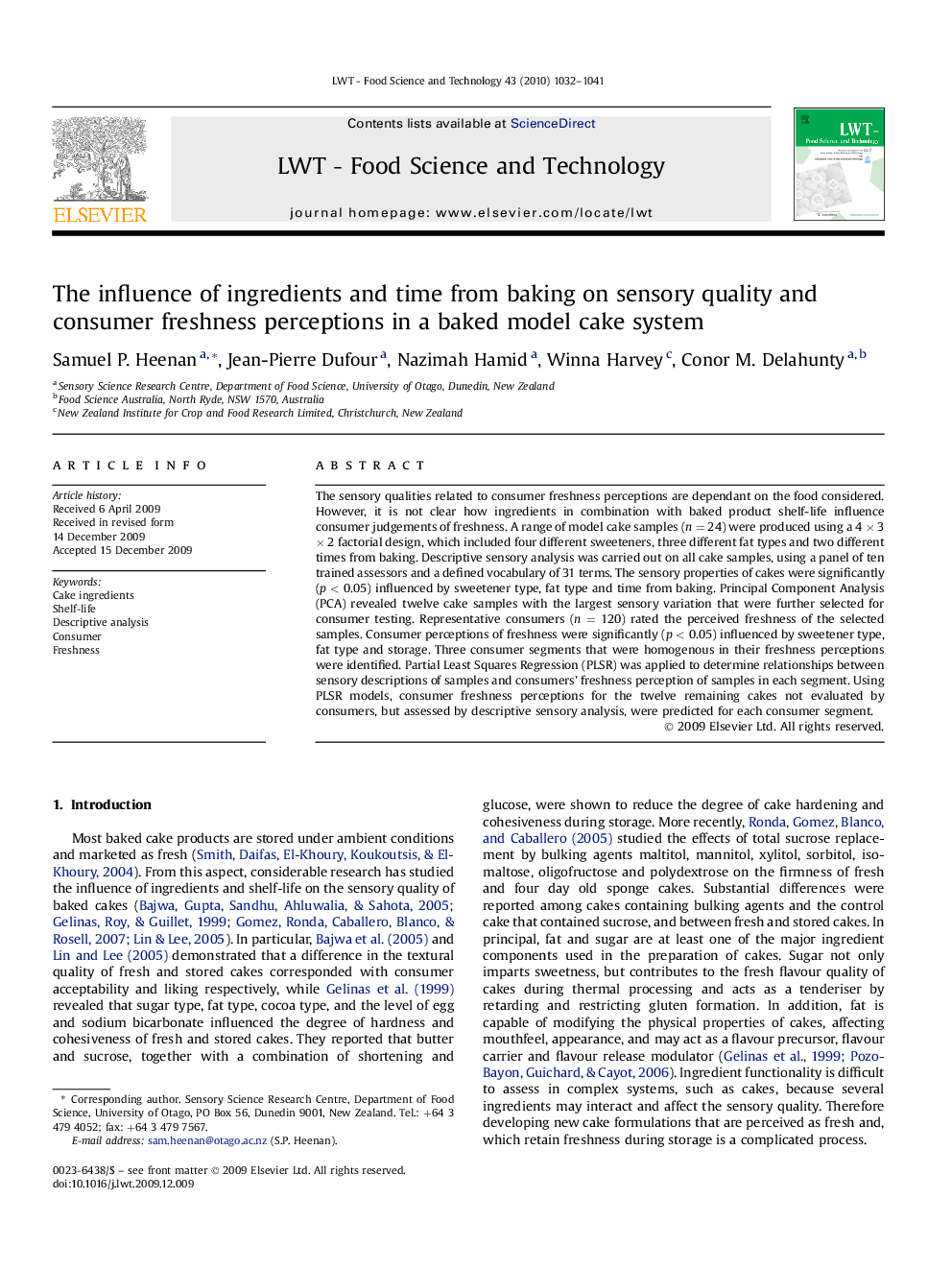| Article ID | Journal | Published Year | Pages | File Type |
|---|---|---|---|---|
| 4564509 | LWT - Food Science and Technology | 2010 | 10 Pages |
The sensory qualities related to consumer freshness perceptions are dependant on the food considered. However, it is not clear how ingredients in combination with baked product shelf-life influence consumer judgements of freshness. A range of model cake samples (n = 24) were produced using a 4 × 3 × 2 factorial design, which included four different sweeteners, three different fat types and two different times from baking. Descriptive sensory analysis was carried out on all cake samples, using a panel of ten trained assessors and a defined vocabulary of 31 terms. The sensory properties of cakes were significantly (p < 0.05) influenced by sweetener type, fat type and time from baking. Principal Component Analysis (PCA) revealed twelve cake samples with the largest sensory variation that were further selected for consumer testing. Representative consumers (n = 120) rated the perceived freshness of the selected samples. Consumer perceptions of freshness were significantly (p < 0.05) influenced by sweetener type, fat type and storage. Three consumer segments that were homogenous in their freshness perceptions were identified. Partial Least Squares Regression (PLSR) was applied to determine relationships between sensory descriptions of samples and consumers' freshness perception of samples in each segment. Using PLSR models, consumer freshness perceptions for the twelve remaining cakes not evaluated by consumers, but assessed by descriptive sensory analysis, were predicted for each consumer segment.
